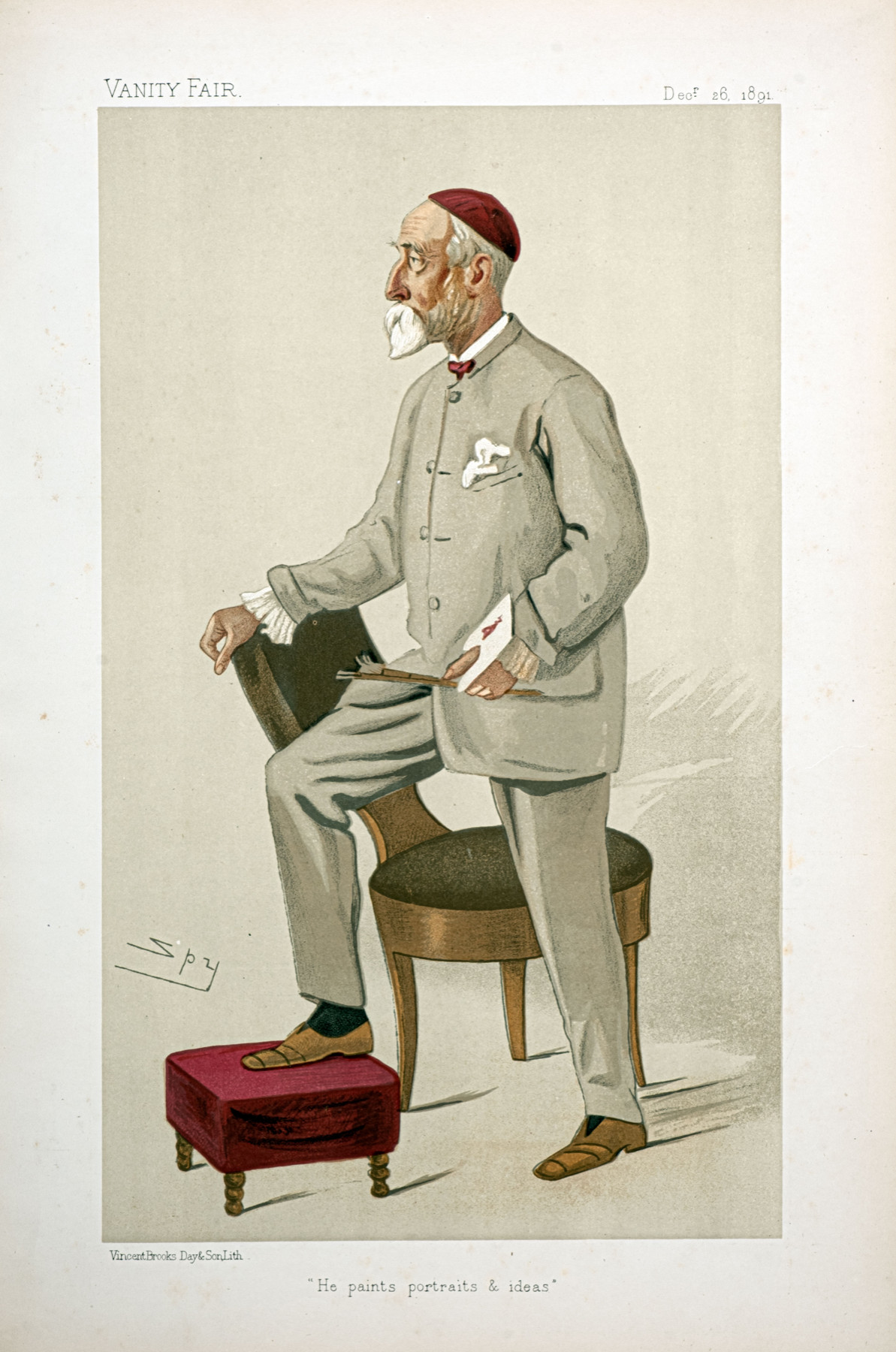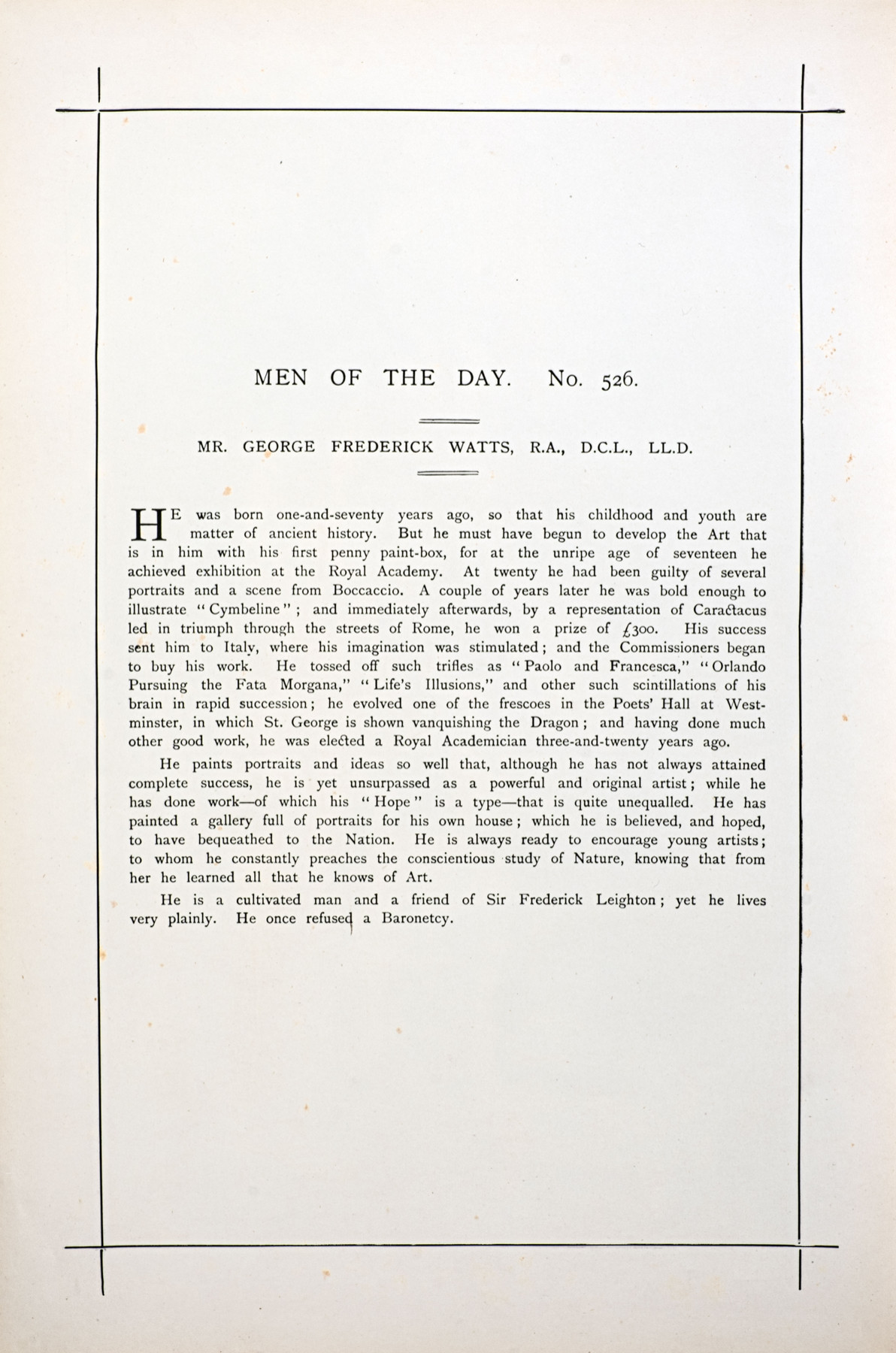


George Frederic Watts (1817-1904) was a painter and sculptor, who at the time of his appearance in Vanity Fair, was one of the most famous artists in the world. Though his Symbolist work, with which he is widely associated, has divided critics, he is still regarded as one of the greatest English portrait painters.
“He was born one-and-seventy years ago, so that his childhood and youth are matter of ancient history. But he must have begun to develop the Art that is in him with his first penny paint-box, for at the unripe age of seventeen he achieved exhibition at the Royal Academy. At twenty he had been guilty of several portraits and a scene from Boccaccio. A couple of years later he was bold enough to illustrate ‘Cymbeline’; and immediately afterwards, by a representation of Caractacus led in triumph through the streets of Rome, he won a prize of £300. His success sent him to Italy, where his imagination was stimulated; and the Commissioners began to buy his work. He tossed off such trifles as ‘Paolo and Francesca,’ ‘Orlando Pursuing the Fata Morgana,’ ‘Life's Illusions,’ and other such scintillations of his brain in rapid succession; he evolved one of the frescoes in the Poets' Hall at West-minster, in which St. George is shown vanquishing the Dragon; and having done much other good work, he was elected a Royal Academician three-and-twenty years ago.
He paints portraits and ideas so well that, although he has not always attained complete success, he is yet unsurpassed as a powerful and original artist; while he has done work-of which his ‘Hope’ is a type - that is quite unequalled. He has painted a gallery full of portraits for his own house; which he is believed, and hoped, to have bequeathed to the Nation. He is always ready to encourage young artists; to whom he constantly preaches the conscientious study of Nature, knowing that from her he learned all that he knows of Art.
He is a cultivated man and a friend of Sir Frederick Leighton; yet he lives very plainly. He once refused a Baronetcy.”